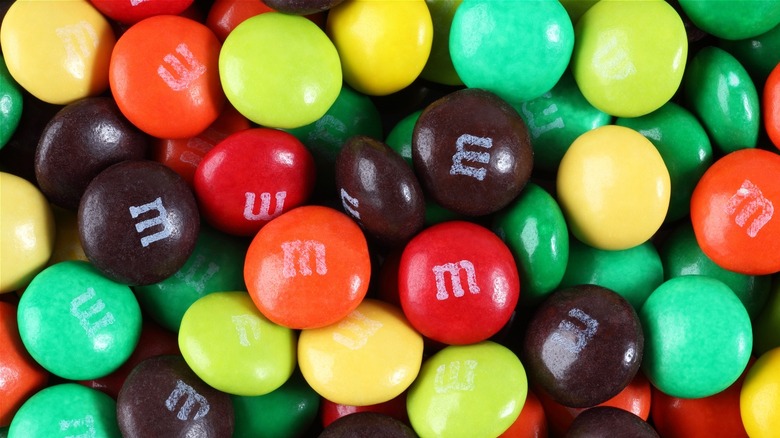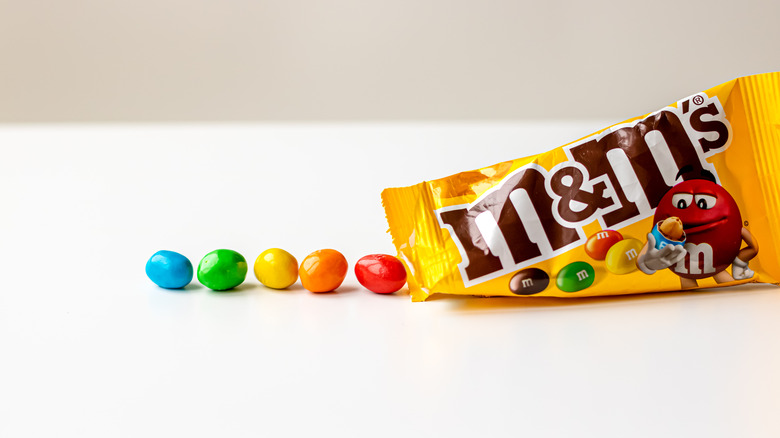M&M's Have Been The Candy-Coated Guinea Pig Of The Science Community
You don't have to look far to find interesting M&M's trivia. For instance, did you know M&M's are called lentils around the Mars corporate offices? Or that the M&M's name stands for Forrest Mars and Bruce Murrie (son of Hershey Chocolate's president), who were the team that initially launched the candies? These are Jeopardy-worthy fun facts and they get progressively more interesting as you dig into M&M's history.
What almost nobody talks about is the fascinating fact that M&M's have been utilized in major research studies. We're not talking elementary school science projects in which kids dissolve the candy shells into a rainbow of self-contained colors on a plate (although that's pretty cool too). In fact, M&M's have been used to make notable advances in science.
One study started as a joke. An M&M's-loving professor received a gag gift from his students to the tune of thousands of M&M's poured into a 55-gallon drum left in his office. According to CNN, that professor was Princeton physicist Paul Chaikin. He and his colleague Princeton chemist Salvatore Torquato naturally hatched a plan to test the physical and mathematical principles involved when packing objects into a container. Spoiler alert: M&M's pack more densely than perfect spheres. That might not sound like a big deal, but academics say otherwise. And that is not the only research that made the candy-coated nibbles the star of a particular study.
From studies in physics to psychology, M&M's are popular with scientists
The American Psychological Association reported on a study that used M&M's to help measure aggression and cheating related to violent versus non-violent video games. The Journal of Analytical Toxicology, via Science Daily, reported a study carried out at Ohio State University to investigate racehorses testing positive for drugs after their owners fed them peanut M&M's. Per NPR, a Carnegie Mellon University study used M&M's to uncover ways to curb binge eating.
That's a lot of science connected to these tiny little candies. It's certainly the kind of acclaim that could overshadow the more pedantic trivia M&M's executives want to forget — like the time M&M's notoriously missed out on one of the most famous candy moments in movie history. In fact, academics from the Princeton University study have said that the mastery of condensed matter physics has been eluding scientists for centuries and its M&M's study "has implications for fields such as the design of high-density ceramic materials for use in aerospace" and more.
That M&M's are heavyweights in the science world is compelling, though admittedly not all that research has had a meaningful scientific impact. Researchers at Carnegie Mellon University, for instance, said that before they could recommend their M&M's study findings as a dieting technique, more tests would be needed.
That's fine. M&M's have a meaningful impact on us just by keeping their promise of melting in our mouths and not in our hands.

